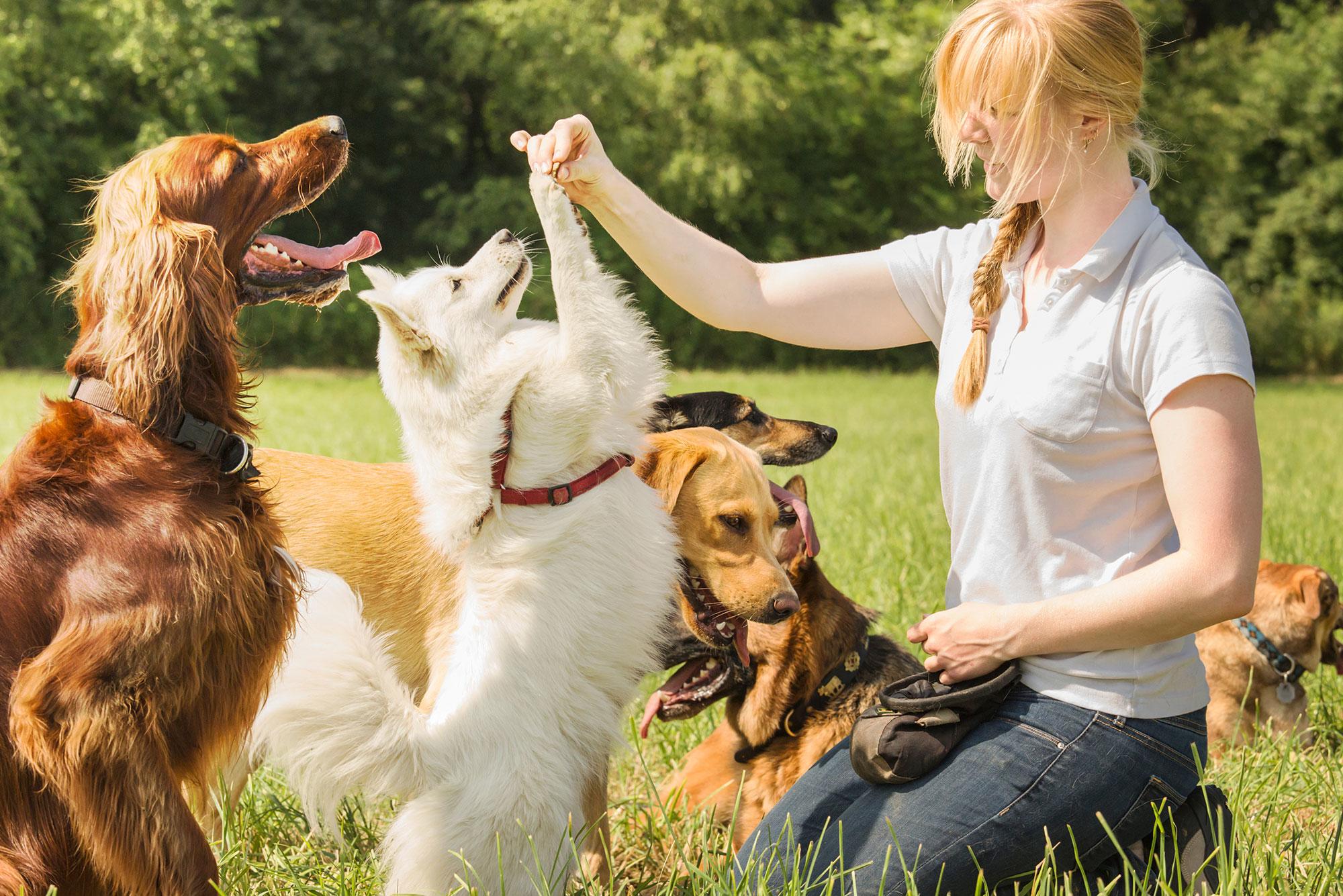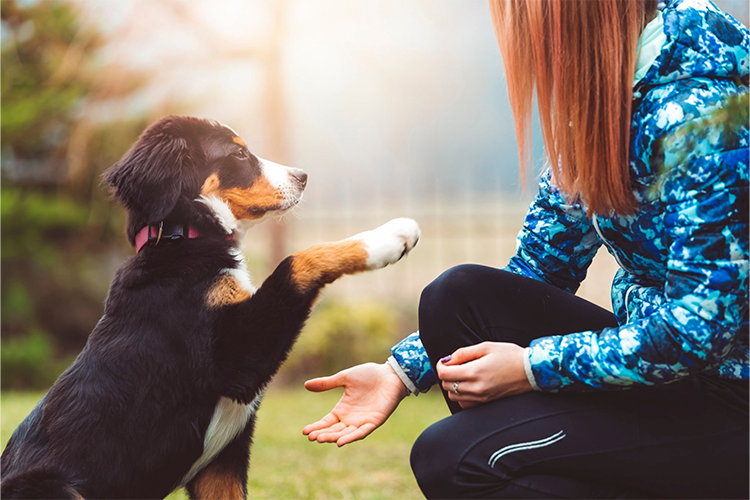Top Strategies for Effective Dog Training Techniques Every Pet Owner Should Know
Top Strategies for Effective Dog Training Techniques Every Pet Owner Should Know
Blog Article
Newbie's Guide to Successful Canine Training in the house
Efficiently training a canine at home calls for a nuanced understanding of canine behavior and efficient interaction methods. Establishing clear training goals, using top notch benefits, and keeping uniformity throughout household members are vital elements. Incorporating training into day-to-day routines can enhance both interaction and retention.
Understanding Canine Actions
Recognizing pet dog habits is vital for reliable training and cultivating an unified connection in between human beings and their canine buddies. Pet dogs interact largely via body language, vocalizations, and faces, making it crucial for owners to analyze these signals accurately. Acknowledging actions such as tail wagging, grumbling, or cring can give understandings into a dog's emotion and objectives.

Usual behavioral concerns, such as hostility, anxiousness, or too much barking, typically come from misconceptions or unmet requirements. Observing and attending to these problems promptly can avoid rise and ensure a favorable training experience. By fostering a deep understanding of dog habits, owners can tailor their training methods to fit their canine friends, ultimately bring about a well-behaved and pleased pet.
Vital Educating Devices
A well-equipped training room can significantly enhance the effectiveness of dog training in the house. Vital training tools make sure that both the pet and the instructor can participate in productive sessions that foster discovering and bonding.

Spending in a sturdy leash and a comfy, well-fitting collar or harness is vital for safety and security and control. These tools help develop boundaries and make certain the canine continues to be safe and secure during training. In addition, a designated training location, without distractions, aids focus for both the dog and the instructor.
Training help such as training pads, cones, or agility devices can also boost the experience by introducing range and difficulties. Lastly, having a notebook or digital app for tracking progress can be indispensable, allowing you to keep in mind successes and areas for renovation. Using these necessary tools will produce a favorable training atmosphere and lay the foundation for reliable understanding.
Developing an Educating Routine
Developing a constant training routine is crucial for efficient pet training in your home. A well-structured routine not just aids in enhancing wanted behaviors yet additionally offers your canine with a complacency and predictability. To develop an efficient training routine, start by identifying specific training objectives, such as basic commands, chain walking, or house-breaking.
Choose a designated time each day for training sessions, ideally when your pet dog is alert and receptive. Sessions needs to be short, approximately 5 to 15 mins, to maintain emphasis and protect against tiredness. Uniformity in timing and atmosphere will boost your dog's discovering experience.
Include training into daily activities to reinforce abilities. Technique commands during walks or mealtime, which integrates discovering into natural regimens. Furthermore, stay adaptable and change the routine as essential, fitting your dog's power degrees and state of mind.
Favorable Support Techniques
Positive support methods are essential to reliable canine Discover More training, promoting desired behaviors with benefits rather than punishment. This method uses positive stimuli, such as deals with, praise, or playtime, to urge canines to duplicate specific activities. The keystone of this strategy is timing; incentives should be given right away adhering to the desired habits to produce a clear association.
When applying favorable support, it is important to select benefits that are motivating for your canine. High-value treats, such as tiny pieces of poultry or cheese, can be especially effective throughout training sessions. Additionally, differing the incentives can preserve your pet's rate of interest and enthusiasm.
Begin with straightforward commands, like "rest" or "remain," and gradually development to extra intricate tasks. Uniformity is key; make sure that all member of the family make use of the same commands and benefit systems to stay clear of confusion.
Additionally, it is vital to remain patient and prevent disappointment. Pets, like humans, discover at their very own pace. By promoting an encouraging training atmosphere through positive reinforcement, you can boost your dog's learning experience while reinforcing the bond between you and your fuzzy friend, laying the groundwork for effective training results.
Typical Educating Obstacles
While educating a canine in the house can be a rewarding experience, it typically includes a set of usual obstacles that can test both persistence and uniformity. One widespread issue is distraction. Dogs may end up being conveniently averted by sounds, motions, and even scents in their environment, making it difficult to maintain their focus throughout training sessions.
Another challenge is variance in commands and reinforcement. If member of the family make use of various hints or benefits, it can perplex the pet and prevent development. Developing a unified technique is important for effective communication.
Additionally, pets can experience disappointment or anxiety, specifically if they do not understand what is anticipated of them. This can cause unfavorable behaviors, such as barking or eating.
Lastly, the timing of reinforcement is critical (Dog training). Postponed incentives can decrease the efficiency of positive support, as canines may fail to link the behavior with the incentive
Getting over these obstacles needs commitment, clear interaction, and a structured training plan. Acknowledging and dealing with these usual challenges will lead the way for a Look At This much more pleasurable and successful training experience in the house.
Verdict
Finally, effective dog training in your home demands a thorough understanding of canine habits and effective interaction strategies. By developing clear training objectives and using high-quality treats along with favorable reinforcement, the training procedure comes to be much more fulfilling for both the fitness instructor and the pet. Versatility, perseverance, and uniformity are necessary components that assist in discovering. Inevitably, incorporating training into everyday regimens improves the bond in between More Bonuses canine and proprietor, making the experience both efficient and satisfying.
Establishing a constant training regimen is necessary for effective canine training at home.Favorable support strategies are essential to efficient canine training, promoting wanted behaviors via incentives instead than punishment (Dog training). By fostering an encouraging training setting with positive reinforcement, you can enhance your pet dog's discovering experience while enhancing the bond between you and your furry companion, laying the groundwork for effective training results
In conclusion, effective dog training at home necessitates a comprehensive understanding of canine habits and reliable interaction techniques. By establishing clear training objectives and utilizing top quality treats alongside favorable reinforcement, the training procedure becomes extra fulfilling for both the instructor and the pet dog.
Report this page